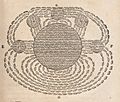Magnetic field facts for kids
A magnetic field is the invisible area around a magnet where its magnetic force can be felt. Think of it like an invisible bubble around a magnet! Moving electric charges, like electricity flowing through a wire, can also create magnetic fields.
We can imagine invisible lines, called magnetic field lines, to help us understand magnetic fields. These lines show the direction of the magnetic field. Where the lines are closer together, the magnetic field is stronger. Where they are farther apart, it's weaker. You can actually see these lines by sprinkling iron filings (tiny bits of iron) around a magnet – they will arrange themselves along the field lines!
Magnetic fields can push or pull on other things that are magnetic or have an electric charge. In physics, a magnetic field is a special kind of field that spreads through space and creates a magnetic force on electric charges and tiny magnetic objects called dipoles.
Magnetic fields are found around electric currents, magnetic dipoles, and even around electric fields that are changing. When small magnetic objects (dipoles) are placed in a magnetic field, they line up with the field lines, just like the iron filings.
Magnetic fields also carry their own energy. The strength of a magnetic field is measured in units called teslas (in the SI system) or gauss (in the cgs system).
There are different types of magnetic fields. To learn about how materials become magnetic, you can look up magnetism and magnet, or a specific type called diamagnetism. For magnetic fields made by changing electric fields, you can read about electromagnetism.
The electric field and the magnetic field are both parts of something bigger called the electromagnetic field. The laws of electromagnetism were discovered by a famous scientist named Michael Faraday.
How Magnetic Fields Work
Magnetic fields are created by moving electric charges. This means that anything with an electric current, like a wire with electricity flowing through it, will have a magnetic field around it. Magnets themselves have magnetic fields because of the way the electrons (tiny charged particles) inside them move and spin.
When you bring two magnets close together, their magnetic fields interact. If opposite poles (North and South) face each other, they pull together (attract). If the same poles (North and North, or South and South) face each other, they push apart (repel). This push or pull is the magnetic force.
Related pages
Images for kids
-
One of the first drawings of a magnetic field, by René Descartes, 1644, showing the Earth attracting lodestones. It illustrated his theory that magnetism was caused by the circulation of tiny helical particles, "threaded parts", through threaded pores in magnets.
See also
 In Spanish: Campo magnético para niños
In Spanish: Campo magnético para niños



